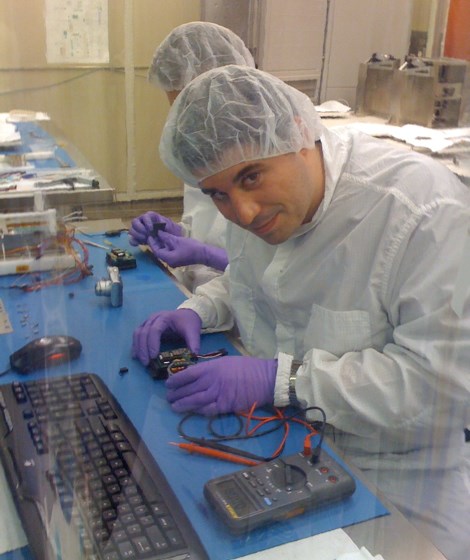International successes are becoming the norm for a talented Saultite whose professional accomplishments ultimately come to full fruition in space. Grant Bonin (shown) is a space systems engineer with the University of Toronto Institute for Aerospace Studies’ Space Flight Laboratory.
“I’m part of a team of 16 full-time engineers and 12 master’s students who have developed nanosatellites that weigh no more than 10 kilograms,” he said recently from Toronto.
Bonin specializes in small spacecraft systems engineering, avionics design and software development.
A week ago a nanosatellite he and co-workers helped construct was successfully carried into orbit.
“We are pleased to announce that AISSat-1 (Automatic Identification System Satellite 1) was successfully launched on PSLV-C15 [the delivery vehicle] last night at 3:52 UTC (12 July) from Sriharikota, India,” Bonin reported in an e-mail to colleagues.
The Sault native was responsible for AISSat-1’s power system and thermal control system.
He assisted with overall systems engineering, too.
Bonin also shared the good news with his very proud mom Kitty Bonin and equally delighted stepfather Russ Hilderley in Goulais River.
“We had a flawless launch tonight, and picked up AISSat-1 on its second pass over Norway,” a happy e-mail enthused.
“Initial telemetry looks healthy as of 4:52 ET (third pass) . . . the spacecraft is at roughly room temperature inside, with fully-charged batteries. Uplink and downlink signal strengths are good . . . . Thanks to all for your support; this has been a great evening for our team.”
Bonin provided a link to a website with launch photos.
The nanosatellite was commissioned by the Norwegian Defence Research Establishment.
“It was developed to detect and monitor ships in Norwegian territorial waters,” Bonin explained.
With that project evolving as planned, attention shifted to a different assignment.
As part of a Canadian/Austrian team within a project called BRITE (for Bright Target Explorer), Bonin left for Europe.
A series of nanosatellites funded by the Austrian Space Program will help study and photograph large, bright stars.
One writer has compared the five-kilogram workhorse to a “handbag-sized Hubble Telescope.”
Yet another binational endeavour will likely take Bonin to the Land Down Under this fall.
He serves as project manager and lead systems engineer for an Australian-led telecommunications demonstration mission that will support researchers stationed in the Antarctic.
After graduating from White Pines, Bonin earned an honours degree in aerospace engineering at Carleton University in Ottawa.
He went on to complete graduate studies in aerospace science and engineering at the University of Toronto Institute for Aerospace Studies.
An advocate for smaller launch vehicles and private sector participation in human space flight, the 28-year-old looks forward to travelling beyond the Earth’s atmosphere during his lifetime.
Bonin works with another man who also has Sault roots.
Chris Coggon is facilities manager at the Space Flight Laboratory.
